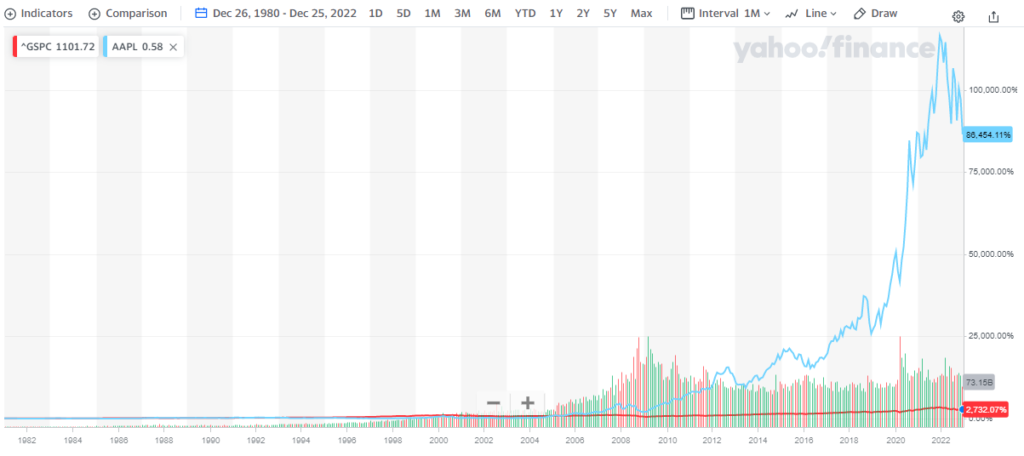
Putting together a college savings plan can be daunting. The rapidly rising cost of higher education can be intimidating, but don’t let the numbers scare you off.
According to the College Board, the average per year cost of a private four-year college is $39,400 compared to $10,950 for a state school.
If college expenses continue to rise at a higher rate than overall inflation, the cost will be much more 10 to 15 years down the road. These amounts leave many wondering if they’ll ever be able to save enough.
With careful planning and discipline, you have a much greater chance of making it happen.
529 College Savings Plan Basics
These plans are tax-advantaged investment accounts to promote saving for college. At least that’s what they were originally intended for. Recent legislation expanded their use for K-12 education and other educational programs. Simply put, they’re not just for college anymore.
These accounts don’t need to be for your own children. While that may be the most common scenario, you can set them up for almost anyone. The beneficiary needs to be a U.S. citizen or resident alien.
Tax advantages of 529 plans
These accounts have special tax benefits, similar to Roth IRAs. Money you sock away allow for tax deferred growth and tax-free withdrawals for qualified education expenses. In ordinary investment accounts, earnings like dividends and realized capital gains are subject to taxes.
Taxes chip away at your investment returns. Saving for future educational expenses with this special tax benefit allows more money to stay in your pocket.
There is no federal income tax deduction for contributions to a 529 plan. Don’t let that scare you off. This is similar to how tax-free Roth IRAs work.
State income taxes are a different story. State income tax deductions or credits are offered by most states. But there’s a catch. You must contribute to your state’s 529 plan. A small number of states will allow state income tax deductions if residents contribute to other states’ plans.
It can be easy to go down this rabbit hole but don’t let it distract you. 529 benefits for federal taxes is reason enough to give them a look. Consider the state tax benefits the icing on the cake.
How to open and contribute to a 529 plan:
Once you’ve chosen the investment provider, opening a 529 plan investment account is easy. Most investment firms allow you to open an account online and establish a link to your checking or savings account.
You can start saving for college with as little as $25 per month. Obviously, that isn’t going to cover all of the education expenses down the road. However, a little bit over a long period of time adds up to a lot!
How to invest in a 529 college savings plan:
As the account owner, you are responsible for matching your investment objectives with an appropriate mix of investments. This is most often accomplished with investments in mutual funds.
How you allocate the investments of the portfolio between high and low risk mutual funds depends on a few things. First, how many years until the funds are needed? Are you setting the account up for a newborn or a freshman in high school? Second, what is your comfort level with risk.
In general, the closer you are to needing to pay for qualified education expenses, the less risk you should take with the mutual funds.
If you’re going to be investing funds for the short term like 1 to 3 years, you should steer clear of the stock market and stick with CDs despite the low rates.
If you are investing with a longer-term time horizon, it would be completely prudent to allocate a portion of your investments to stocks. While CDs and a savings account are very low risk, they may not be the best bet for returns over the long term.
If you’re not comfortable making those investment decisions, the investment manager wil automatically adjust the portfolio to become more conservative as the beneficiary nears college age.
How much does a 529 plan cost?
Not all 529 plans are created equal when it comes to fees. Some are low cost and others, not so much. You need to look at annual charges and the expense ratio of the funds. This is expressed as a percentage. Anything with an expense ratio over 1.00% is suspect.
The good news is that competition in this space is fierce. This has led to reduced fees and costs for consumers. As a Certified Financial Planner™ and fiduciary advisor, I prefer low-cost investments. Whatever you save in fees will stay right in your pocket.

What are qualified educational expenses?
What you can spend 529 plan money on is broad. In general qualified educational expenses included tuition, room and board, technology, special needs resources, and school supplies.
What if I don’t spend the money on college?
You don’t have to spend the money on college, but the expenses do need to be qualified educational expenses.
In general, if you use funds within a 529 plan for anything other than qualified educational expenses, there will be taxes and penalties on the portion that is considered a gain.
For example, if you have $10,000 left in an account and $8,000 represents your investment (or principal), you would be taxed and penalized on the $2,000.
That $2,000 will be subject to federal income tax, a 10% penalty, and potentially state income tax. Total financial hit can be as high as $730 or more.
It’s important to note, the tax rate used to assess the penalty is that of the beneficiary. Most often, the beneficiary will be at a lower tax rate than the parent.
Are there exceptions to the 529 plan withdrawal penalty?
There are several exceptions when it comes to penalties for 529 plans. However, you still pay federal income tax. They include scholarship, military service, disability, and death.
Important tax changes coming in 2024
Beginning in 2024, unused balances in a 529 plan can be rolled over to a Roth IRA. This is a significant change that will allow people to avoid costly penalties.
However, there are restrictions:
- Rollover would transfer to the beneficiary’s Roth IRA, not the parent or account owner.
- You can’t rollover contributions or the earnings from the last five years.
- Rollovers are limited to the annual contribution limit ($6,500 in 2023)
- The 529 needs to have been in existence for 15 years.
- $35,000 cap for Roth IRA rollovers
The beneficiary can be changed
There is often concern about what to do with the funds if your child doesn’t go to college or use the funds for other qualified education expenses.
Beneficiaries can easily be changed. If you spend the 529 funds on the new beneficiary’s education expenses, you will avoid the taxes and penalties.
If the 529 plan is not a UTMA, you can change who will be the recipient of the funds. Some 529 plans have been funded via UTMA accounts. This is where funds have been gifted to a minor for their benefit.
At the age of trust termination, the minor takes control of the funds. If the 529 plan was funded with a UTMA account, you cannot change the beneficiary.
If you’re not currently saving, start.
Don’t wait to have everything figured out before to start. You can work out the details and fine tune as you go. Don’t let analysis lead to paralysis.
If you’re currently at zero dollars per month, start with $25. You don’t need to be an expert and sort through all the different types of account before you start.
529 College Savings Plan – Conclusion
College costs are steep. It’s not just the cost of tuition but room and board as well. If you’re already saving, look for ways to make a small increase.
The failure to start saving or even delaying it by a couple of years can make a huge difference. Once you start the 529 plan, you’ll be amazed at where you can find some extra dollars here and there.
Rome wasn’t built in a day and neither will your college fund. Over time, it will grow. Will the funds be needed in 5, 10, or 20 years? The answers to those questions will be your guide. A 529 plan will help get you there.
Do you have questions about setting up a 529 college savings plan?
Contact me today fo

Diversification is an important principle that prudent investors and advisors adhere to. It is best explained by the expression “don’t keep all of your eggs in one basket.” If XYZ stock is the basket you put all your eggs into and it goes haywire, all your eggs are gone. And that isn’t good.
Diversifying requires an investment among several other stocks and preferably from different industries. Now, if XYZ bites the dust, you still have unbroken eggs in your other baskets.
Diversification examples
Diversification is a risk reduction strategy for many investors. While most associated with equity investments like stocks, it applies to fixed income securities as well.
Let’s say you open a Roth IRA. The first stock you buy is ABC Corporation which is a solar panel manufacturer. While there’s potential for reward if things go great with ABC, there’s also more investment risk.
If ABC doesn’t execute and begins losing customers, the value of your ABC stock will go down with it. Having all your investment in a single asset puts you at higher risk of loss.
To mitigate risk, you add XYZ stock which is a solar panel installer. Now you own two stocks so if one of the companies goes belly up, you still have equity ownership in the other.
While you have reduced your risk compared to the single investment in ABC, you are still exposed to market risk. For example, consider new regulations negatively impact the solar panel industry. It is likely both ABC and XYZ will experience a decline in value.
Now, let’s explore an investment in an index fund that mirrors the S&P 500. By any measure, this would be a diversified investment. The S&P 500 tracks the performance of 500 of the largest US publicly traded companies. Boom! That’s portfolio diversification.
Pros and Cons of Diversification
A diversification strategy will help manage portfolio risk by limiting loss from events that impact a specific company or industry. There is a much higher risk you’ll lose money when investing in one or just a small handful of companies.
On the other hand, with more risk comes the possibility of greater return. For example, let’s assume you invested $10,000 all in Apple stock in 1980. That investment would be over $14 million at the time of this writing.
Compare that with a $10,000 investment in the S&P 500 in 1980. After 42 years, this well diversified portfolio would have grown to roughly $300k. While a decent return, it pales in comparison to Apple’s stock performance.

How can I diversify my portfolio?
Whether investing in the stock market or fixed income securities, diversification is most typically achieved through mutual funds or exchange trade funds (ETFs).
Let’s say you want to invest in the technology sector. You could go out and do your own research. The you’d pick the stocks to include in the entire portfolio. Or you could put your money into a mutual fund.
The mutual fund manager is responsible for allocating capital based on their research and expertise. They will take your funds along with thousands of other investors and buy stock in hundreds of different companies.
Mutual funds aren’t the only way to improve diversification. Exchange traded funds or ETFs can spread risk among many different companies and often at a lower cost than a mutual fund.
While we most often associate diversification with stock market investing, it’s important for fixed income investments too.
If you are building a balanced portfolio and looking for treasury bonds or corporates, you will likely benefit by investing in a bond fund. An investment manager who knows the bond market can reduce overall portfolio risk by diversifying into a variety of different bond asset classes.
Just like stocks, there are exchange traded funds for bonds as well.
Understand your investment objectives, time horizon and tolerance for risk:
Investment objective:
Think of this as your goal or purpose for investing. Are you trying to set aside funds for the down payment on a home, save for college, or build a fund for retirement? Is your goal to achieve significant growth of capital or to receive modest current income via dividends and interest?
Time horizon:
This is the length of time you plan to hold the investment before you need it for its stated purpose or objective. Every investor will have a different time horizon. Is your retirement 5 or 25 years away? Will your kids be going to college in 2 years or 12 years?
Risk tolerance:
The higher the expected returns of an investment, the greater the risk of loss. Your risk tolerance identifies how much risk you are willing to take. Would you lose sleep if your account value dropped by 5%? What if it dropped by 10%?
How would you react to seeing losses in your investment? Would you hit the panic button and sell everything, or would you hold on and wait for things to recover? Can you tolerate seeing any negative returns at all?
These are just basic examples but the answers to these questions will help you choose the investment plan that matches up with your risk tolerance.
Diversification is not the same as asset allocation:
What happens if the stock market crashes (think 2008-09 financial crisis) and you are 100% invested in an S&P 500 index fund? You guessed it. Your portfolio is going down with it. While the stock portfolio is diversified, it is concentrated in one asset class. That asset class is stocks.
To be fair, the same could be true for any asset class like bonds, real estate, or commodities. This is why diversification alone isn’t enough. You can be perfectly well diversified, but if you’re concentrated in one asset class, you’re likely taking on too much risk.
Asset class:
In general, there are five broad asset classes and include stocks (equities), bonds (fixed income), real estate, commodities, and cash (money market). There are sub-classes for each of these, but we won’t get into that here.
What is important is understanding that these classes have varying degrees of correlation to each other. As we discussed earlier, if your portfolio is 100% stocks, while you may be diversified, you are still exposed to only one asset class.
If things head south with that asset class, your diversified portfolio will be going down with it.
Asset allocation:
This is the process of identifying what asset classes to invest in and how much. In general, most investors will be considering how to allocate among stocks, bonds, and cash.
By adjusting the percentage exposure to these asset classes, it will be possible to create a portfolio with an appropriate level of risk.

SPECIAL NOTE: This table is for general explanation and education purposes only and should not be considered investment advice. You should not make decisions based on this table alone. Before any investment decisions are made, one must first carefully assess their investment objective, time horizon, and risk tolerance. Consult a financial professional for help with properly allocating investments among asset classes.
Diversification is critical to building a strong investment portfolio, but it isn’t enough. Without proper asset allocation, your diversified investment portfolio could seriously let you down.
Have you considered how a Certified Financial Planner™ can help you?

Diversification is an important principle that prudent investors and advisors adhere to. It is best explained by the expression “don’t keep all of your eggs in one basket.” If XYZ stock is the basket you put all your eggs into and it goes haywire, all your eggs are gone. And that isn’t good.
Diversifying requires an investment among several other stocks and preferably from different industries. Now, if XYZ bites the dust, you still have unbroken eggs in your other baskets.
Diversification examples
Diversification is a risk reduction strategy for many investors. While most associated with equity investments like stocks, it applies to fixed income securities as well.
Let’s say you open a Roth IRA. The first stock you buy is ABC Corporation which is a solar panel manufacturer. While there’s potential for reward if things go great with ABC, there’s also more investment risk.
If ABC doesn’t execute and begins losing customers, the value of your ABC stock will go down with it. Having all your investment in a single asset puts you at higher risk of loss.
To mitigate risk, you add XYZ stock which is a solar panel installer. Now you own two stocks so if one of the companies goes belly up, you still have equity ownership in the other.
While you have reduced your risk compared to the single investment in ABC, you are still exposed to market risk. For example, consider new regulations negatively impact the solar panel industry. It is likely both ABC and XYZ will experience a decline in value.
Now, let’s explore an investment in an index fund that mirrors the S&P 500. By any measure, this would be a diversified investment. The S&P 500 tracks the performance of 500 of the largest US publicly traded companies. Boom! That’s portfolio diversification.
Pros and Cons of Diversification
A diversification strategy will help manage portfolio risk by limiting loss from events that impact a specific company or industry. There is a much higher risk you’ll lose money when investing in one or just a small handful of companies.
On the other hand, with more risk comes the possibility of greater return. For example, let’s assume you invested $10,000 all in Apple stock in 1980. That investment would be over $14 million at the time of this writing.
Compare that with a $10,000 investment in the S&P 500 in 1980. After 42 years, this well diversified portfolio would have grown to roughly $300k. While a decent return, it pales in comparison to Apple’s stock performance.

How can I diversify my portfolio?
Whether investing in the stock market or fixed income securities, diversification is most typically achieved through mutual funds or exchange trade funds (ETFs).
Let’s say you want to invest in the technology sector. You could go out and do your own research. The you’d pick the stocks to include in the entire portfolio. Or you could put your money into a mutual fund.
The mutual fund manager is responsible for allocating capital based on their research and expertise. They will take your funds along with thousands of other investors and buy stock in hundreds of different companies.
Mutual funds aren’t the only way to improve diversification. Exchange traded funds or ETFs can spread risk among many different companies and often at a lower cost than a mutual fund.
While we most often associate diversification with stock market investing, it’s important for fixed income investments too.
If you are building a balanced portfolio and looking for treasury bonds or corporates, you will likely benefit by investing in a bond fund. An investment manager who knows the bond market can reduce overall portfolio risk by diversifying into a variety of different bond asset classes.
Just like stocks, there are exchange traded funds for bonds as well.
Understand your investment objectives, time horizon and tolerance for risk:
Investment objective:
Think of this as your goal or purpose for investing. Are you trying to set aside funds for the down payment on a home, save for college, or build a fund for retirement? Is your goal to achieve significant growth of capital or to receive modest current income via dividends and interest?
Time horizon:
This is the length of time you plan to hold the investment before you need it for its stated purpose or objective. Every investor will have a different time horizon. Is your retirement 5 or 25 years away? Will your kids be going to college in 2 years or 12 years?
Risk tolerance:
The higher the expected returns of an investment, the greater the risk of loss. Your risk tolerance identifies how much risk you are willing to take. Would you lose sleep if your account value dropped by 5%? What if it dropped by 10%?
How would you react to seeing losses in your investment? Would you hit the panic button and sell everything, or would you hold on and wait for things to recover? Can you tolerate seeing any negative returns at all?
These are just basic examples but the answers to these questions will help you choose the investment plan that matches up with your risk tolerance.
Diversification is not the same as asset allocation:
What happens if the stock market crashes (think 2008-09 financial crisis) and you are 100% invested in an S&P 500 index fund? You guessed it. Your portfolio is going down with it. While the stock portfolio is diversified, it is concentrated in one asset class. That asset class is stocks.
To be fair, the same could be true for any asset class like bonds, real estate, or commodities. This is why diversification alone isn’t enough. You can be perfectly well diversified, but if you’re concentrated in one asset class, you’re likely taking on too much risk.
Asset class:
In general, there are five broad asset classes and include stocks (equities), bonds (fixed income), real estate, commodities, and cash (money market). There are sub-classes for each of these, but we won’t get into that here.
What is important is understanding that these classes have varying degrees of correlation to each other. As we discussed earlier, if your portfolio is 100% stocks, while you may be diversified, you are still exposed to only one asset class.
If things head south with that asset class, your diversified portfolio will be going down with it.
Asset allocation:
This is the process of identifying what asset classes to invest in and how much. In general, most investors will be considering how to allocate among stocks, bonds, and cash.
By adjusting the percentage exposure to these asset classes, it will be possible to create a portfolio with an appropriate level of risk.

SPECIAL NOTE: This table is for general explanation and education purposes only and should not be considered investment advice. You should not make decisions based on this table alone. Before any investment decisions are made, one must first carefully assess their investment objective, time horizon, and risk tolerance. Consult a financial professional for help with properly allocating investments among asset classes.
Diversification is critical to building a strong investment portfolio, but it isn’t enough. Without proper asset allocation, your diversified investment portfolio could seriously let you down.
Have you considered how a Certified Financial Planner™ can help you?






